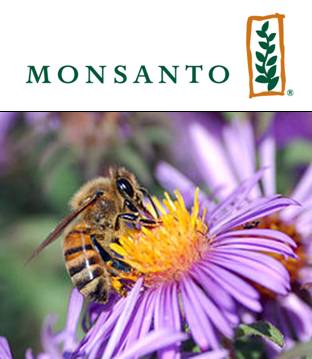
To Bee or Not to Bee
Colony Collapse Disorder (CCD) is a phenomenon evident in recent years in which worker bees suffer from a breakdown in their navigational abilities to return to the hive, resulting in neglect of the bees to provide food for eggs and larvae, and thus a collapse of the bee colony.
To deal with mounting concern over CCD, researchers have been focusing more actively on the possible causes of this deadly trend which has claimed over 30% of US bee populations alone. Outbreaks in Europe and other regions, with bee mortalities of 40-50%, have also exacted a heavy toll on these “pollination enablers,” threatening to shake the balance in the fragile ecosystem.
Leading researchers view CCD as a complex phenomenon with multiple causes, including bee immune-system weakening due to poor diet (bee breeding frequently involves feeding the bees pesticide-laced corn syrup instead of their own honey), and modern beekeeping techniques which include the artificial insemination of bee queens, resulting in loss of diversity in the bee gene pool.
Controversy over the role of neonicotinoids (neonics or NeoNics, a class of neuro-active insecticides chemically related to nicotine) in pesticide toxicity for bees, and specifically, the effects of the neonic imidacloprid (the most widely used insecticide in the world) on bee population, has caused the use of several neonics to be restricted in some countries due to their potential link to CCD.
Neonics are used to coat over 140 million acres of corn, wheat, soy, and cotton seeds in the U.S. alone. Neonics are absorbed by a plant’s vascular system, and can contaminate the pollen and nectar that bees encounter when foraging. Speculation has centered on neonics acting as a nerve poison, designed to disorient insects, which appears to be damaging the homing ability of bees as well.
Recent scientific publications have more-strongly implicated a connection between neonics and CCD, casting a negative light on intellectual-property holders and companies like Bayer CropScience and Monsanto – makers of imidacloprid and the genetically-modified Roundup Ready corn (known as Bacill Thuringiensis (Bt) corn), respectively.
Entomologists at Purdue University found that neonic-containing dust released into the air during planting had “lethal effects compatible with colony losses phenomena observed by beekeepers.” Furthermore, a study by the Harvard School of Public Health was able to reproduce CCD in several honeybee hives simply by administering small doses of imidacloprid. Both studies were published in 2012.
Beeologics – a bee research firm with intellectual property founded in 2007 which is “dedicated to restoring bee health and protecting the future of honey bee pollination,” and focused on researching CCD and Israeli Acute Paralysis Virus (IAPV) – has developed a patent-pending product called Remebee – an anti-viral agent which utilizes RNA interference to restore the bees’ impaired, hive-homing sense.
In September 2011, Monsanto acquired Beeologics for an undisclosed amount in support of their IP management and IP strategy. Many critics have viewed this as an attempt by Monsanto to prevent any implication of its role in the cause of CCD by “quieting” any unfavorable research findings of Beeologics going forward.
In a statement, Monsanto said, “We’re absolutely committed to Beeologics’ existing work.” The Beeologics website further states:
The expertise Beeologics has developed will enable Monsanto to further explore the use of biologicals broadly in agriculture. Monsanto will use the base technology from Beeologics as a part of its continuing discovery and development pipeline. Biological products will continue to play an increasingly important role in supporting the sustainability of many agricultural systems. Both companies expect that their combined research could provide farmers with novel approaches to the challenges they face.
The intentions of Monsanto in its acquisition of Beeologics as part of their IP strategy are not the focus of the analysis here. There will always be conspiracy theories floating in the ether of public discourse, especially with the rising popularity of niche-topic blogs.
For example, some have linked 2011’s film Unknown, starring Liam Neeson, as an overt reference to overreaching food-supply control. Discussions of Malthusian population control and the Codex Alimentarius have even spurred musicians to hatch their own pet theories of The Great Cull of the human population and mankind’s own Colony Collapse.
Yet, if we step back from the buzz, we can certainly see the Beeologics acquisition as a valuable asset in their IP management for extending Monsanto’s intellectual property in the agrotech arena. However, with Monsanto’s dominance in the industry, an environment of public opinion hostile to genetically-engineered products has partly arisen due to a backlash over fear of an “all-controlling single supplier” as noted in the previous section. To be, or not to be, sensitive to the PR climate, that is the question. This is even more evident in the political/legal maneuverings discussed in the following section.












